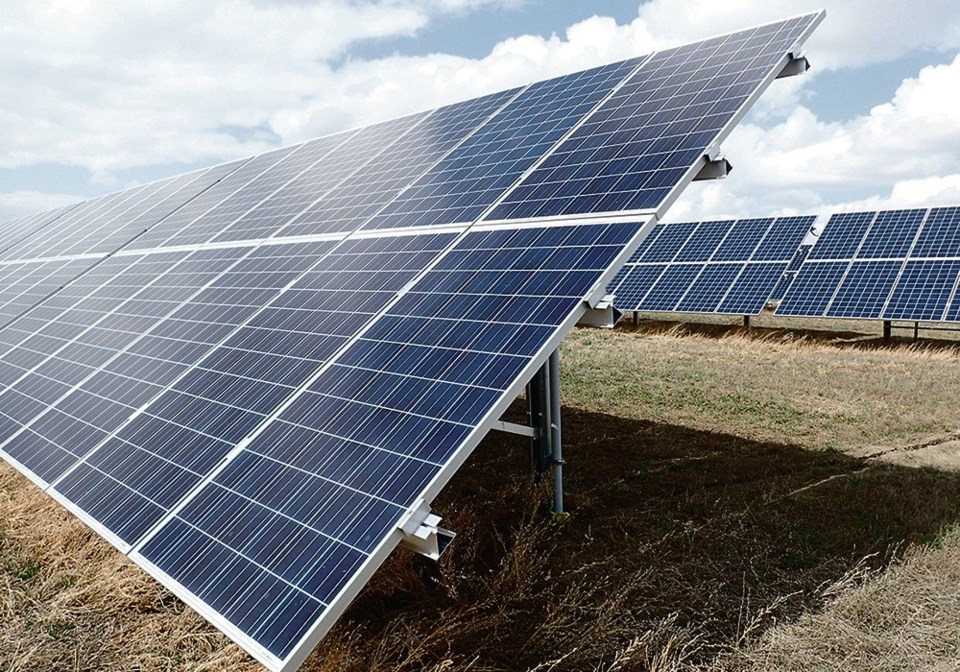WESTERN PRODUCER — More than 22,500 farms reported renewable energy use in last year’s ag census, up from a little more than 10,000 in 2016
The number of Canadian farms reporting use of renewable energy has more than doubled in the last five years, according to the latest data in the 2021 Statistics Canada agricultural census.
More than 22,500 farms nationally reported having renewable energy production on their operations, up from a little more than 10,000 in 2016.
The biggest source of that increase is solar power with more than 14,000 of the 22,000 farms reporting it as the renewable power production of choice.
Advocacy group Solar Alberta’s executive director, Heather Mackenzie, called the growth in renewable power on farms “massive.”
“I would say the majority of calls that I get about solar are from rural Alberta these days,” said Mackenzie.
A trend that appears to be driving interest in solar is the concept of agrivoltaic operations, she said, a concept that sees land used for both photovoltaic (PV) panels and agricultural production.
“Some of the larger, utility scale production are on farmland, often, and when it’s on good farmland, what they are doing is combining livestock or crop production with solar PV,” she said.
Mackenzie pointed to such an operation in central Alberta where Innisfail leased municipal land to a solar production company, which is also used as a sheep ranch.
Solar is also increasingly used to power irrigation pumps, which Mackenzie says provides a good opportunity to use second-hand panels.
“Solar panels can last 25 to 40 years and beyond, they just don’t generate as much as they would when they are new,” she said. “If your primary goal is to irrigate and you don’t need a top-of-the-line panel because you’re not trying to make money off the panel, it’s great.”
As well, more solar panels are being placed over open canals to help stem evaporation, while producing electricity, she added.
Statistics Canada credits government programs for the growth of on-farm renewable energy production, but the president of an Edmonton-based renewable company said those programs have dried up.
Dandelion Renewables’ Mikhail Ivanchikov said programs such as the joint federal-provincial Growing Forward program for on-farm solar was extremely successful, as has been an Alberta program funded by the provincial carbon tax on large CO2 emitters, which hasn’t been renewed.
But when it comes to current programs specifically for offsetting costs for farmers through use of renewables, there aren’t any.
“The scale of the programs significantly dropped once those programs terminated,” said Ivanchikov, with only residential programs currently being funded. “They left farmers limping in the dark.”
But on-farm solar still has value, he said, pointing to the rise in power prices across the country.
“It’s hard for the farming industry to control that and that’s my concern, it’s a risk if the prices continue to escalate,” he said. “It’s important for farmers to be able to put some control over power prices in the farmers’ hands.”
Ivanchikov said most solar installations will last for 25 years with payback coming within 10 to 15 years. But with higher input costs being faced by producers, solar panels are not a priority.
“Certainly, support from the government would go a long way because more support would ensure the farming industry, in the long run, is protected from power price fluctuations,” he said.
The Canadian government has indicated it’s committed to controlling greenhouse gas emissions in the agricultural sector, which makes up 10 percent of the national total.
The federal Agricultural Clean Technology Program application process was suspended earlier this year due to high demand.
More than 22,500 farms reported renewable energy use in last year’s ag census, up from a little more than 10,000 in 2016

